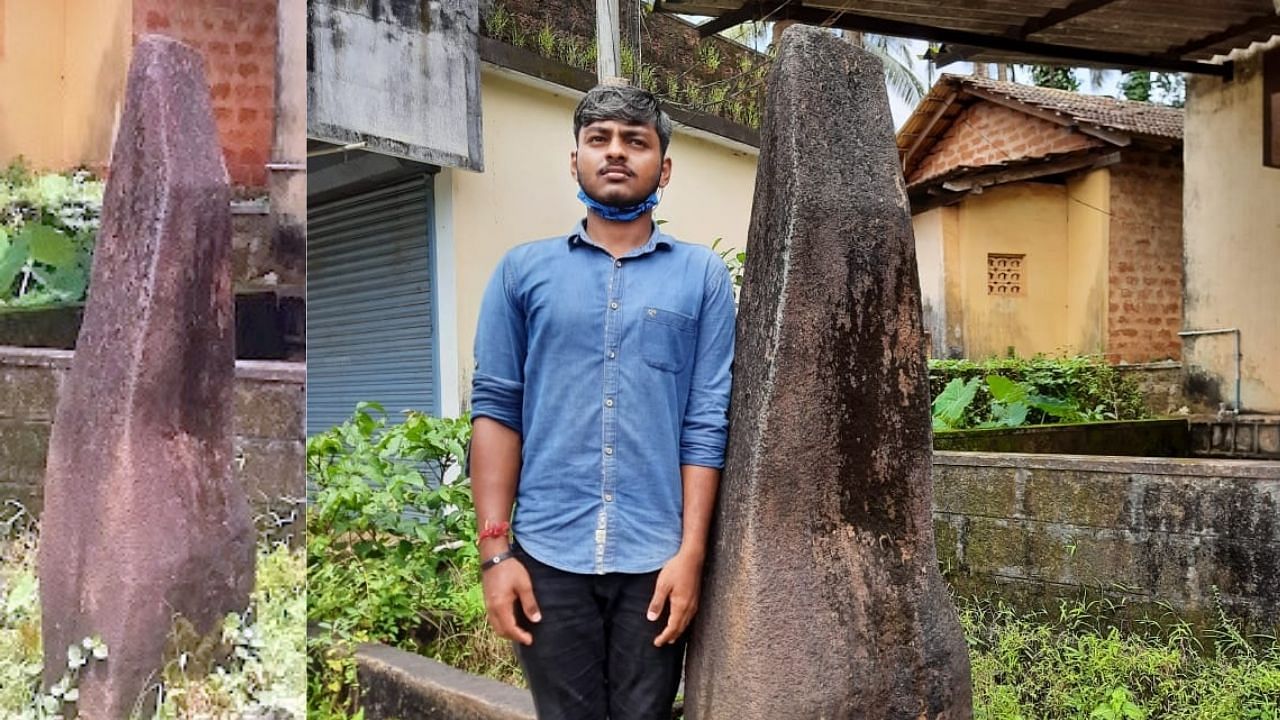
A typical Menhir stone slab, about seven feet in height, was found at Basrur, a medieval historical city, on the west coast of India.
“The local legends, associated with Menhir, mentioned them as pregnancy stones. But we do not know whether they were built in memory of a deceased pregnant woman or not. The Menhir found at Basrur is oriented to the north-west direction and is slightly leaning to the east,” said Prof Murugeshi T, Associate Professor, Department of Ancient History and Archeology MSRS College, Shirva.
He said, “Basure or Basiru means pregnant in the local language, Kannada. Basrur, a medieval trading city of coastal Karnataka is known by various names like Basurepattana, Basurepura, Vasupura and Basaruru. It is known for many temples as a mark of its splendid wealth. Devi Temple of Basrur has special importance.
"It is the only temple in India where the feast of Devi is performed once in every 60 years. Mahalingeshwara Temple, Venkataramana Temple, Kote Anjaneya Temple, Tuluveshwara Temple, Devi Temple, Ramachandra Temple, Umamaheshwara Temple, Bhairava Temple, Garadi, Sadananda Mutt are just a few surviving examples of its glorious past."
Upright standing stones of the Megalithic period, Menhirs are normally erected above or near the burial as a memorial stone of the dead. The discovery of a Menhir near Venkataramana Temple at Basrur dates back to the Megalithic period of 1000 BC.
Stylistic Menhir of Basrur has a close similarity to that of Menhirs of Baise and Nilskal of Shivamogga district, added Prof Murugeshi.
He thanked Murulidhar Hegade, Pradeep Basrur, Basruru Venkataramana Temple trustees for their help and students of archeology, Shreyas, Gowtham, Nagaraj, Karthik and Chandru for taking part in this discovery.
Check out latest videos from DH: